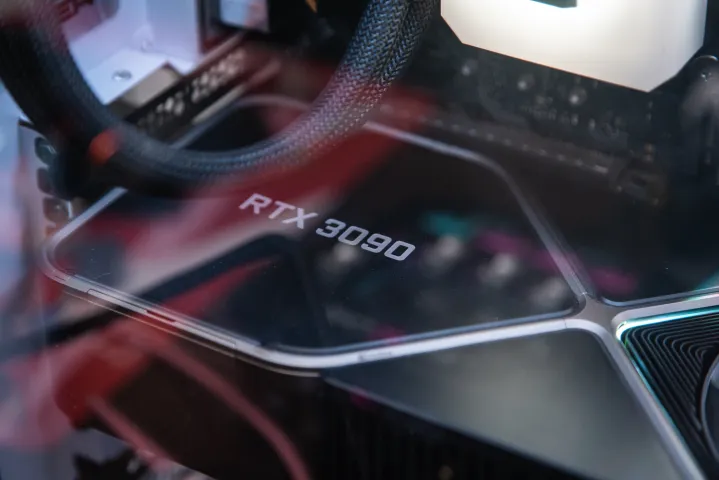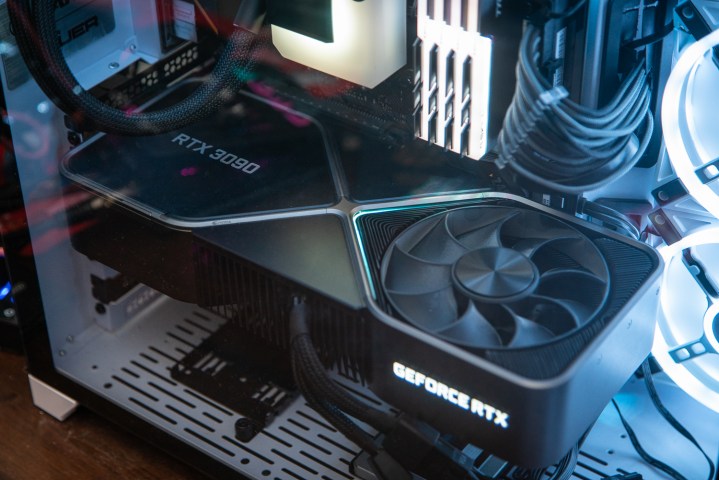The push for higher resolutions rages on, and 4K has quickly become the standard for a high-end gaming PC. When I was fortunate enough to find an RTX 3090 in stock, which I knew was a capable 4K graphics card, I knew I had to upgrade my monitor to go with it.
Contents
- The RTX 3090 situation
- Get your performance in check
- Forget resolution — talk pixel density
- Still not prime time for 4K
But after using 4K monitor for a few months,I’m already back to 1440p. Here’s why I don’t plan on going back.
Recommended Videos
The RTX 3090 situation

I’ve already drawn the ire of tired gamers hunting for a graphics card during the GPU shortage, but I still need to set the scene. I own an RTX 3090. It’s not a review sample, I didn’t get it for free, and I didn’t buy it through some strange connection. I saved up for nearly a year, waited patiently as my attempts to buy a
Related
- 4K gaming monitors are getting cheaper, but I still won’t buy one
- AMD might still have some next-gen GPUs left in the tank — but I don’t buy it
- Nope, I still don’t regret buying my Steam Deck
I’m lucky, even considering how much time I spent trying to hunt down a
The RTX 3090 is the most capable
Get your performance in check

Consoles screw everything up. In the final years of last-gen consoles,
There are tools to help with this, such as Nvidia Image Scaling and AMD Radeon Super Resolution, but for the most part, your PC will render every pixel for whatever resolution you select. And
That’s tough on PCs, even ones packed with an RTX 3090. My personal rig has an Intel Core i9-10900K, the RTX 3090, and 32GB of memory. In my main game,Destiny 2,I hover between 70 and 80 frames per second (fps) at

Those results aren’t bad, but they’re not what I expected from what it supposed to be the most performant GPU on the market. Bumping down to 1440p is much more forgiving — 95 fps in Assassin’s Creed Valhalla,and a locked 144 fps to match my refresh rate inDestiny 2.
Simply put,
Forget resolution — talk pixel density

Resolution is the name of the game with monitors, but you should always consider it in the context of pixel density, which helps determine how large pixels are physically for a given screen size. Take a
The lower the pixel density, the easier it is to make out individual pixels. We want high pixel density, where the individual pixels are smaller and therefore harder to make out. Resolution and display size scale pixel density oppositely, so you can end up with a similar pixel density at two different resolutions.
In my case, I moved from a 32-inch

That’s a bit lower, but remember that
Also consider that most TVs have far lower pixel density than
Technical bits aside, the point about pixel density is that it’s absolutely vital to consider the screen size for a given resolution. In the case of my two
Still not prime time for 4K

Native
With more than double the pixels as 1440p,
Editors' Recommendations
- Don’t believe the hype — the era of native resolution gaming isn’t over
- I bought Nvidia’s worst-value GPU, but I don’t regret it
- I tested Nvidia’s new RTX feature, and it fixed the worst part of PC gaming
- Nvidia finally made a tiny RTX 4000 graphics card (but you probably don’t want it)
- I switched to an AMD GPU for a month — here’s why I don’t miss Nvidia